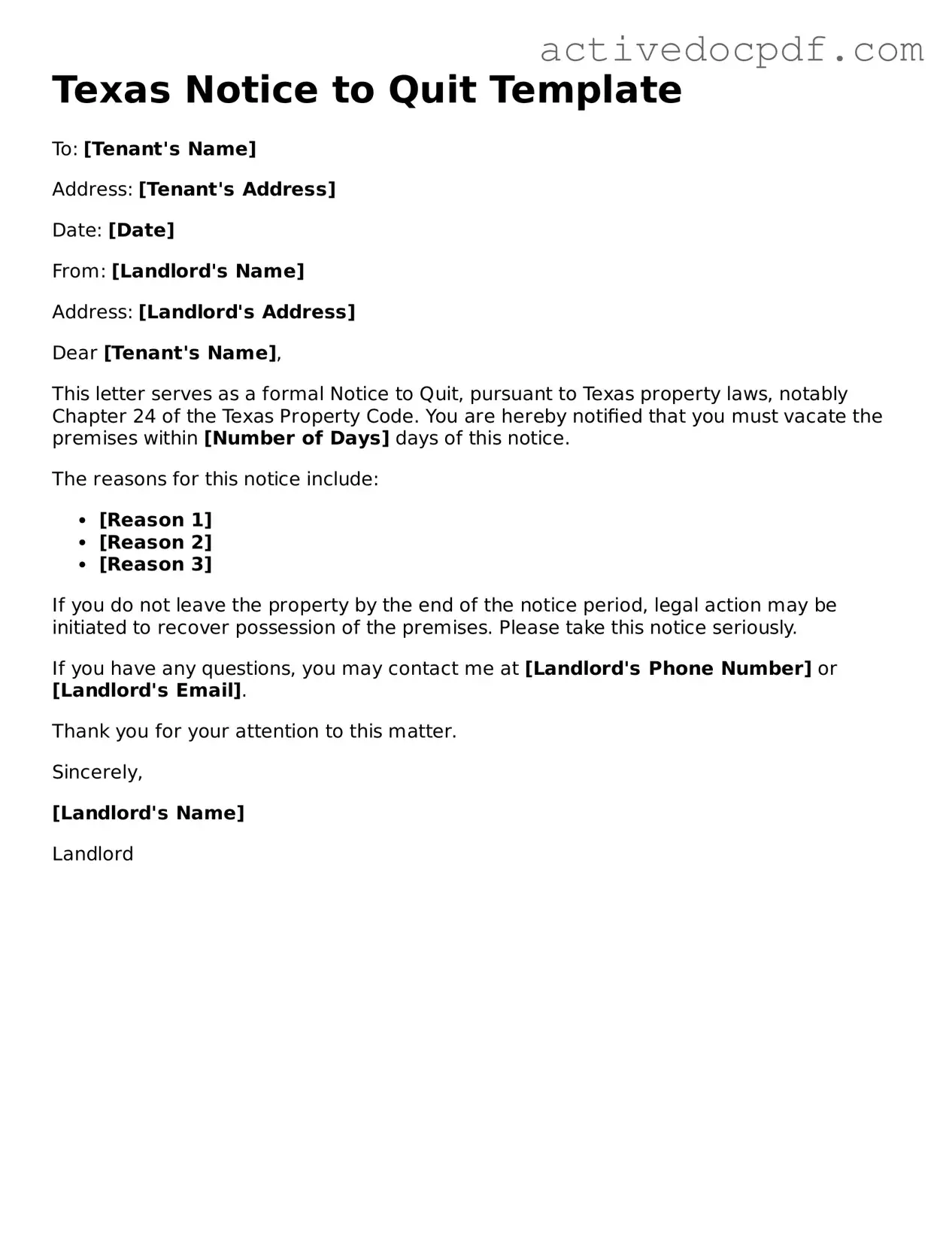The Texas Notice to Quit form is a legal document that a landlord uses to inform a tenant that they must vacate the rental property. This notice is typically issued when a tenant has violated the terms of their lease agreement or has not paid rent. It serves as a formal notification that the landlord intends to terminate the tenancy and requires the tenant to leave the premises within a specified time frame.
When should a landlord use a Notice to Quit?
A landlord may issue a Notice to Quit in several situations, including:
-
Failure to pay rent on time.
-
Violation of lease terms, such as unauthorized pets or excessive noise.
-
Engaging in illegal activities on the property.
-
End of lease term without renewal.
It's important for landlords to follow the correct procedures and provide appropriate notice to ensure compliance with Texas law.
How much notice must be given to the tenant?
The amount of notice required depends on the reason for the eviction. Generally, Texas law mandates the following:
-
If the tenant has not paid rent, a 3-day notice is typically required.
-
For lease violations, a 10-day notice may be necessary to allow the tenant time to correct the issue.
-
In cases of lease termination without cause, a 30-day notice is usually appropriate.
Landlords should ensure that the notice period complies with state regulations to avoid complications during the eviction process.
What happens if a tenant does not comply with the Notice to Quit?
If a tenant does not comply with the Notice to Quit by the specified deadline, the landlord may proceed with the eviction process. This typically involves filing an eviction lawsuit, known as a forcible entry and detainer action, in the local justice court. The court will then schedule a hearing where both the landlord and tenant can present their cases. If the court rules in favor of the landlord, a judgment will be issued, allowing the landlord to regain possession of the property.
Can a tenant contest a Notice to Quit?
Yes, a tenant has the right to contest a Notice to Quit. If a tenant believes the notice is unjust or that they have rectified the situation, they can respond to the notice and communicate with the landlord. If the issue escalates to court, the tenant can present evidence and arguments to defend their position during the eviction hearing. It is advisable for tenants to seek legal assistance to understand their rights and options in these situations.
